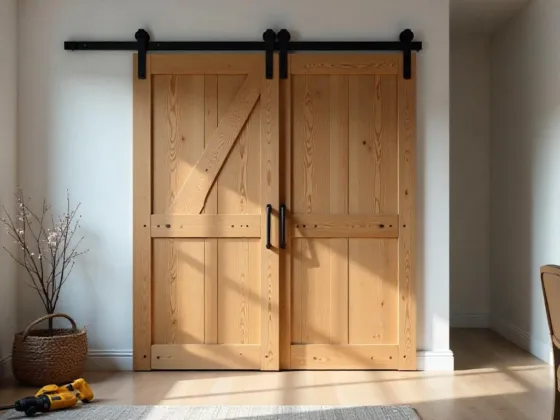Table of Contents Show
Trees are an important part of our environment, providing us with fresh air, shade, and beauty. To keep them healthy and attractive, tree pruning is a necessary maintenance task.

Pruning involves removing dead, diseased, or broken branches to promote the growth of new ones. It also helps maintain the overall shape and size of the tree. However, tree pruning is not as simple as just cutting off branches.
It requires proper techniques and tools to avoid damaging the tree. In this article, we will discuss the benefits of tree pruning, techniques, and tips for proper tree pruning.
Benefits of Tree Pruning
Tree pruning is an important aspect of maintaining the health and beauty of trees. Pruning involves selectively removing certain branches, shoots or stems to improve the structure, appearance, and overall health of the tree. Here are some benefits of tree pruning:
- Promotes tree health: Tree pruning promotes the health of the tree by removing diseased, dying, or dead branches. This prevents decay and the spread of disease or pests that could affect the entire tree.
- Improves tree structure and stability: Pruning can improve the structure and stability of a tree by removing branches that are crossing, rubbing, or growing too close together. This helps to prevent branches from breaking and falling, reducing the risk of property damage and personal injury.
- Enhances aesthetic appeal: Pruning can enhance the beauty and appearance of a tree by shaping it into a more pleasing form. This can also improve the tree’s overall health by allowing more sunlight and air circulation to reach the inner branches.
- Increases fruit production in fruit trees: Pruning fruit trees can increase the amount and quality of fruit produced. Removing excess branches allows the tree to focus its energy on producing larger and better-quality fruit.
- Reduces risk of falling branches: By removing dead or diseased branches, the risk of falling branches is reduced, which can be dangerous to people or property. Pruning also ensures that the tree remains stable during high winds or storms.
- Overall, tree pruning is a crucial aspect of tree maintenance that benefits both the tree and its surroundings. Pruning promotes the health and longevity of the tree while reducing the risk of damage to property and people.
Techniques for Tree Pruning
Tree pruning techniques involve various methods for removing certain branches or parts of a tree to improve its structure, appearance, and overall health. Here are some common techniques for tree pruning tree surgeon in Nottingham.
- Crown thinning: This technique involves removing small, weak, or crossing branches from the crown of the tree, which allows light and air to reach the inner branches. This helps to reduce the weight on the outer branches, making them less likely to break.
- Crown reduction: This technique involves reducing the height and spread of the tree by removing the larger branches or stems. This is done to control the tree’s size or to remove branches that are too close to structures or power lines.
- Crown raising: This technique involves removing the lower branches of the tree to increase the clearance under the tree’s canopy. This is typically done for safety or to provide clearance for vehicles or pedestrians.
- Deadwooding: This technique involves removing dead or dying branches from the tree. Deadwood can be dangerous as it can fall and cause damage or injury.
- Directional pruning: This technique involves pruning to direct the growth of the tree in a particular direction. This is commonly done to train young trees to grow in a specific form, such as a central leader or multiple stems.
It’s important to note that the technique used for tree pruning depends on the tree species, its growth habit, and the pruning objective.
Pruning should also be done in a way that does not damage the tree or leave large open wounds that could invite pests and diseases.
It’s recommended to hire a professional arborist for complex pruning jobs or if you are unsure about the proper technique for pruning your tree.
Read Also:
When to Prune Trees
Knowing when to prune trees is crucial for the health and growth of the tree. Pruning at the wrong time can cause damage and weaken the tree. Here are some guidelines on when to prune trees:
- Winter: Late winter is an ideal time to prune trees as they are dormant and the leaves have fallen, making it easier to see the tree’s structure. Pruning during this time promotes new growth in the spring.
- Spring: Pruning in early spring before new growth starts can help shape the tree and remove any winter damage. However, it’s important to avoid pruning too late in the spring as this can affect the tree’s growth and lead to disease.
- Summer: Summer pruning is typically done to control the size of the tree, remove any dead or diseased wood, and shape the tree. However, it’s important to avoid pruning during hot, dry periods as this can cause stress to the tree.
- Fall: Pruning in the fall is generally not recommended as it can stimulate new growth that may not have time to harden before winter, making it more susceptible to cold damage.
It’s important to note that the timing of pruning also depends on the species of the tree. Some trees, such as maple and birch, are best pruned in the late summer or fall, while others, such as oak, are best pruned in the winter. If you are unsure about when to prune your tree, it’s recommended to consult with a professional arborist.
Tips for Proper Tree Pruning
Proper tree pruning is essential for maintaining the health, structure, and appearance of the tree. Here are some tips for proper tree pruning:
- Identify the objectives: Determine the reason for pruning the tree, whether it’s to improve the structure, promote health, or enhance aesthetics. This will help you determine which parts of the tree to prune and the technique to use.
- Use the proper tools: Use sharp, clean tools, such as pruning shears, loppers, and saws, to make clean cuts that promote healing and prevent damage. Make sure the tools are appropriate for the size and type of the branch being pruned.
- Know the anatomy of the tree: Understand the structure of the tree, including the location of the branch collar, the branch bark ridge, and the apical meristem. This will help you make proper cuts that promote healing and prevent damage.
- Prune at the right time: Prune during the dormant season or in early spring before new growth starts. Avoid pruning during hot, dry periods as this can cause stress to the tree.
- Start small: Begin pruning with small cuts and work your way up to larger cuts. This allows you to assess the tree’s response to the pruning and make adjustments as needed.
- Remove the right branches: Remove branches that are diseased, dead, or damaged, as well as those that are crossing or rubbing against each other. Avoid removing more than 25% of the tree’s canopy at one time.
- Make proper cuts: Make clean cuts at a slight angle to prevent water from pooling on the surface, which can lead to disease. Cut just outside the branch collar, leaving the collar intact to promote healing.
- Monitor the tree’s response: Observe the tree’s response to the pruning and make adjustments as needed. If you notice any signs of stress or disease, consult with a professional arborist.
Proper tree pruning requires knowledge, skill, and experience. If you are unsure about how to prune your tree, it’s recommended to consult with a professional arborist to ensure the best results.
Tree Pruning Do’s and Don’ts
Tree pruning can be beneficial for the health, appearance, and safety of your trees. However, it’s important to follow certain do’s and don’ts to ensure proper pruning and avoid damaging the tree. Here are some tree pruning do’s and don’ts:
Do’s:
- To identify the objectives for pruning and plan accordingly.
- Do use sharp, clean tools that are appropriate for the size and type of the branch being pruned.
- Do make clean cuts just outside the branch collar, leaving the collar intact to promote healing.
- Do prune during the dormant season or in early spring before new growth starts.
- To remove branches that are diseased, dead, or damaged, as well as those that are crossing or rubbing against each other.
- Do monitor the tree’s response to the pruning and make adjustments as needed.
- Do hire a professional arborist if you’re unsure about how to prune your tree or if the job requires climbing or using heavy equipment.
Don’ts:
- Don’t prune too much or too often, as this can weaken the tree and reduce its ability to produce energy through photosynthesis.
- Don’t prune during hot, dry periods as this can cause stress to the tree.
- Don’t make flush cuts, which remove the branch collar and can slow healing and promote decay.
- Don’t top trees, which involves removing the upper portion of the tree’s canopy, as this can damage the tree and make it more vulnerable to disease and pests.
- Don’t use pruning paint or other sealants on cuts, as this can actually slow healing and promote disease.
- Don’t leave stubs, which can also slow healing and promote decay.
- Don’t try to prune large branches or trees without proper training and equipment, as this can be dangerous for both you and the tree.
By following these do’s and don’ts, you can help ensure proper tree pruning and promote the health and safety of your trees.
Conclusion
Tree pruning is an important task for maintaining healthy and beautiful trees. By understanding the benefits, techniques, and tips for proper tree pruning, you can keep your trees looking their best while promoting their growth and longevity.
Remember to use the right tools, techniques, and safety precautions to ensure the job is done properly. By taking care of your trees, you are not only benefiting yourself but also the environment. So, don’t wait any longer, get started on your tree pruning today!









